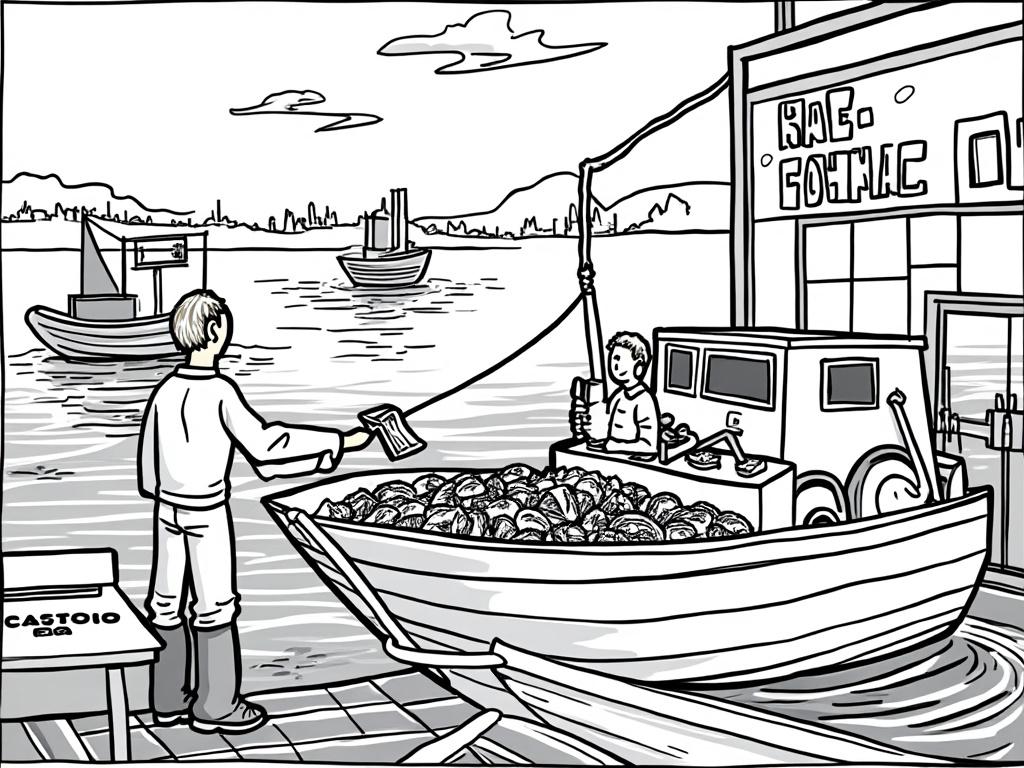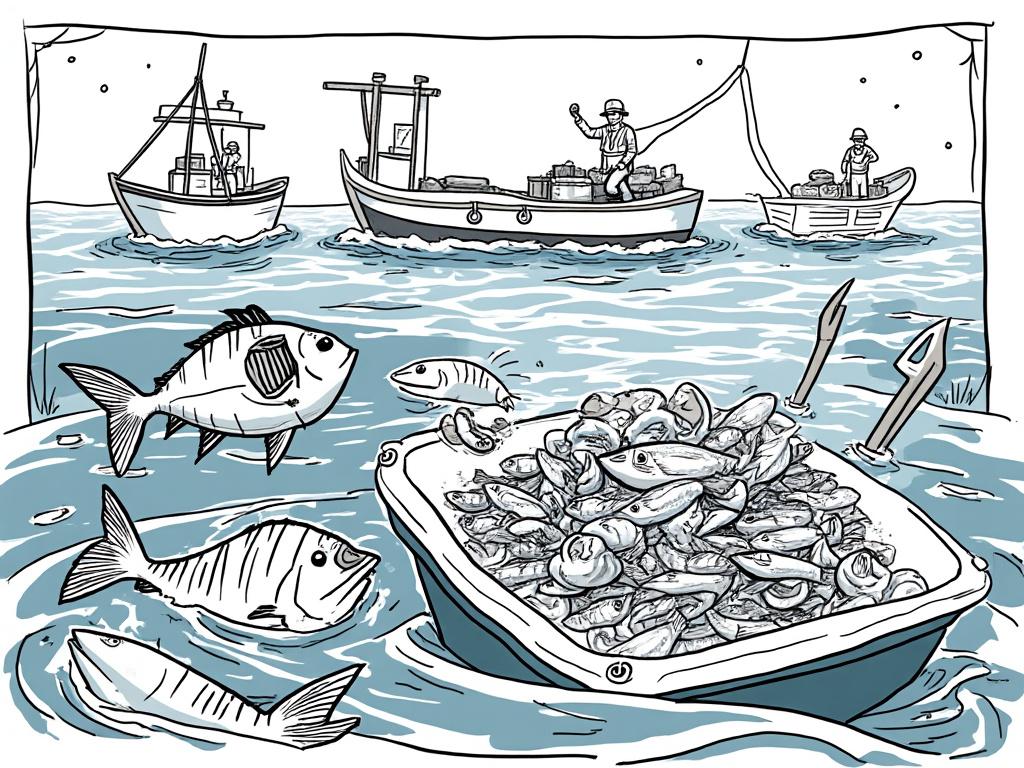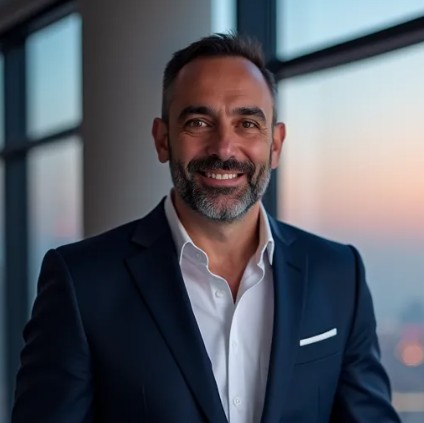
Greece’s Fishing Industry: Navigating Ancient Traditions in Modern Waters
Reading time: 12 minutes
Ever wondered how a country surrounded by azure Mediterranean waters transforms its maritime heritage into a thriving modern industry? Greece’s seafood and fishing sector tells a fascinating story of tradition meeting innovation, where ancient techniques dance with contemporary challenges.
Table of Contents
- Industry Overview: Greece’s Maritime Legacy
- Key Species and Regional Specializations
- Modern Challenges: Sustainability Meets Profitability
- The Aquaculture Revolution
- Export Markets and Economic Impact
- Navigating EU Regulations and Local Policies
- Charting Your Course: Industry Opportunities Ahead
- Frequently Asked Questions
Industry Overview: Greece’s Maritime Legacy
Picture this: A weathered fisherman on the island of Kalymnos checks his nets at dawn, continuing a tradition that spans millennia. Yet today, his catch might end up in a high-tech processing facility, destined for restaurants in Tokyo or New York. This is modern Greek fishing—where ancient wisdom meets global markets.
Greece’s fishing industry contributes approximately €650 million annually to the national economy, employing over 25,000 people directly and supporting countless coastal communities. With 13,676 kilometers of coastline—one of the longest in Europe—Greece possesses natural advantages that few countries can match.
Geographic Advantages and Fleet Composition
The Greek fishing fleet consists of approximately 16,000 vessels, ranging from small family-owned boats to modern industrial trawlers. Here’s what makes Greece’s maritime position unique:
- Strategic location: Positioned at the crossroads of Europe, Asia, and Africa
- Diverse fishing grounds: Access to both Mediterranean and Aegean seas
- Island communities: Over 200 inhabited islands create localized fishing economies
- Traditional knowledge: Generations of fishing expertise passed down through families
Employment and Economic Structure
The industry’s workforce breaks down into distinct categories: 60% work on small-scale coastal vessels, 25% in aquaculture operations, and 15% in processing and distribution. This distribution reflects Greece’s emphasis on traditional, sustainable fishing practices while embracing modern aquaculture techniques.
Key Species and Regional Specializations
Walk through Athens’ Varvakios fish market before dawn, and you’ll witness Greece’s incredible marine diversity firsthand. Vendors arrange gleaming displays of everything from tiny anchovies to massive bluefin tuna, each species telling its own story of Greek waters.
Commercial Fish Species by Economic Value
| Species | Annual Catch (tons) | Economic Value (€ millions) | Primary Regions | Export Percentage |
|---|---|---|---|---|
| Sea Bass & Sea Bream | 125,000 | 580 | Crete, Peloponnese | 75% |
| Anchovies | 8,500 | 45 | Northern Aegean | 30% |
| Sardines | 12,000 | 38 | Ionian Sea | 25% |
| Tuna Species | 3,200 | 95 | Central Mediterranean | 85% |
| Mussels | 22,000 | 42 | Northern Greece | 40% |
Regional Fishing Specializations
Crete and Southern Islands: These regions dominate Greece’s aquaculture sector, particularly sea bass and sea bream farming. The warm waters and protected bays create ideal conditions for fish farming operations that have become models for sustainable aquaculture across the Mediterranean.
Northern Aegean: Traditional fishing communities here specialize in small pelagic fish like anchovies and sardines. The cooler waters and nutrient upwelling create perfect conditions for these species, supporting both local consumption and processing for export.
Ionian Islands: Known for their diverse catch including red mullet, dentex, and various shellfish species. The deeper waters around these islands support both commercial and recreational fishing industries.
Modern Challenges: Sustainability Meets Profitability
Here’s the straight talk: Greek fishermen face a perfect storm of challenges that would sink lesser industries. Yet their response has been nothing short of remarkable, transforming potential disasters into opportunities for innovation.
Climate Change and Shifting Stocks
Mediterranean waters are warming at twice the global average, causing fish populations to migrate northward. Traditional fishing grounds that sustained communities for generations now yield different species—or sometimes, disappointingly little.
Case Study: On the island of Lesbos, sardine fisherman Yannis Papadopoulos watched his family’s traditional fishing grounds become increasingly barren. Instead of abandoning the trade, he invested in equipment for targeting newer species moving into the area, including various types of sea bream. “Adaptation isn’t just survival,” he explains, “it’s evolution.”
EU Regulations and Quota Management
The European Union’s Common Fisheries Policy presents both challenges and opportunities. While quotas limit catch quantities, they also help ensure long-term sustainability. Greek fishermen have learned to work within these constraints by:
- Diversifying target species to maximize quota utilization
- Improving fishing efficiency through technology upgrades
- Developing aquaculture to supplement wild catch limitations
- Creating cooperative structures to share quota allocations effectively
Technology Integration Challenges
Quick scenario: Imagine you’re a third-generation fisherman whose grandfather navigated by stars and wind patterns. Today, GPS systems, fish finders, and satellite weather data could revolutionize your operations—but the learning curve feels mountainous.
Many Greek fishing operations face this exact challenge. The solution has been gradual, community-supported technology adoption, often facilitated by EU funding programs that provide both equipment and training.
The Aquaculture Revolution
Greece’s aquaculture sector represents one of Europe’s greatest success stories—and it’s still writing new chapters. From humble beginnings in the 1980s, Greek fish farming now produces over 130,000 tons annually, making it the EU’s second-largest aquaculture producer.
Aquaculture Production Comparison
Annual Aquaculture Production by Species (in thousands of tons)
Innovation in Fish Farming
Sustainable Practices: Greek aquaculture companies have pioneered several environmentally friendly techniques, including integrated multi-trophic aquaculture (IMTA) systems where fish, shellfish, and seaweed are grown together, creating balanced ecosystems that minimize waste.
Case Study: Andromeda Group, one of Greece’s largest aquaculture companies, has developed offshore farming systems that can withstand harsh weather while maintaining optimal fish health. Their floating farms in the Aegean Sea produce over 8,000 tons of high-quality sea bass and sea bream annually, with 80% destined for export markets.
Investment Opportunities in Aquaculture
The sector continues attracting international investment, particularly from investors interested in greek property for sale that includes coastal aquaculture facilities. The combination of favorable climate, established infrastructure, and growing global demand creates compelling investment opportunities.
Pro Tip: The right aquaculture investment isn’t just about immediate returns—it’s about positioning yourself in a sector that’s projected to grow 15% annually through 2030.
Export Markets and Economic Impact
Greece exports approximately €1.2 billion worth of seafood products annually, with aquaculture products comprising 85% of this value. The country has successfully positioned itself as a premium supplier in international markets, competing on quality rather than volume.
Primary Export Destinations
- Italy: 28% of exports (€336 million) – primarily fresh sea bass and sea bream
- Spain: 18% of exports (€216 million) – diverse species including processed products
- France: 15% of exports (€180 million) – high-value premium products
- Germany: 12% of exports (€144 million) – frozen and processed seafood
- United States: 8% of exports (€96 million) – specialty Mediterranean species
Value-Added Processing
Greek companies have moved beyond simply exporting raw fish. Modern processing facilities now produce smoked fish, fish fillets, ready-to-cook products, and gourmet canned goods that command premium prices in international markets.
Success Story: Galaxidi Marine Farm transformed from a small family operation to an international brand by focusing on organic certification and direct-to-consumer sales. Their organic sea bass now sells in high-end European restaurants at prices 40% above conventional alternatives.
Navigating EU Regulations and Local Policies
Well, here’s the reality: Success in Greek fishing isn’t just about catching fish—it’s about mastering a complex web of regulations that can make or break your operation. Let’s turn these potential headaches into strategic advantages.
Key Regulatory Compliance Areas
Fishing Licenses and Quotas: All commercial fishing operations require proper licensing through the Hellenic Ministry of Rural Development and Food. Quota allocations are managed through producer organizations that help distribute catch limits fairly among members.
Environmental Compliance: The EU’s Marine Strategy Framework Directive requires extensive environmental monitoring for aquaculture operations. While initially challenging, these requirements have pushed Greek producers toward more sustainable practices that now serve as marketing advantages.
Food Safety Standards: HACCP (Hazard Analysis Critical Control Points) implementation is mandatory for all processing facilities. Greek companies have embraced these standards, often exceeding minimum requirements to access premium export markets.
Practical Compliance Strategies
- Join Producer Organizations: Membership provides quota access, regulatory guidance, and collective bargaining power
- Invest in Traceability Systems: Modern tracking from sea to sale isn’t just compliance—it’s a competitive advantage
- Pursue Certification Programs: Organic, MSC, or ASC certifications open premium market segments
- Maintain Documentation Standards: Proper record-keeping prevents costly regulatory issues
Charting Your Course: Industry Opportunities Ahead
Ready to navigate Greece’s fishing industry toward unprecedented growth? The convergence of traditional expertise, technological innovation, and global market demand creates a perfect storm—this time, in your favor.
Your Strategic Roadmap for Success:
1. Embrace Sustainable Innovation
The future belongs to operations that balance profitability with environmental stewardship. Invest in recirculating aquaculture systems, renewable energy integration, and closed-loop production methods that minimize waste while maximizing output.
2. Diversify Your Portfolio
Don’t put all your nets in one fishing ground. Combine wild catch with aquaculture, develop value-added products, and explore niche markets like organic certification or specialty Mediterranean species that command premium prices.
3. Leverage Digital Transformation
Modern fishing success depends on data-driven decisions. Implement IoT sensors for water quality monitoring, use AI for optimal feeding schedules, and employ blockchain for supply chain transparency that customers increasingly demand.
4. Build Strategic Partnerships
Form alliances with research institutions, join cooperative marketing efforts, and establish direct relationships with international buyers. The strongest fishing operations are those that swim together, not alone.
5. Position for Climate Adaptation
Mediterranean waters will continue changing. Invest in flexible infrastructure that can adapt to shifting species patterns, and consider expanding into offshore aquaculture that’s less affected by coastal environmental changes.
The Greek fishing industry stands at an inflection point where ancient maritime wisdom meets cutting-edge technology and global market opportunities. Those who navigate these waters skillfully won’t just survive—they’ll thrive in ways previous generations could never have imagined.
What legacy will your fishing operation create in Greece’s next maritime chapter?
Frequently Asked Questions
What are the main requirements for starting a fishing business in Greece?
Starting a commercial fishing operation in Greece requires obtaining proper licenses from the Ministry of Rural Development and Food, registering your vessel with port authorities, and joining a recognized producer organization for quota access. You’ll also need to comply with EU fishing regulations, maintain proper insurance coverage, and implement food safety protocols if you plan to process or sell directly to consumers. Initial investment typically ranges from €50,000 for small coastal operations to several million euros for larger aquaculture facilities.
How profitable is aquaculture compared to traditional fishing in Greece?
Aquaculture generally offers more predictable returns than wild-catch fishing, with profit margins typically ranging from 15-25% compared to 8-15% for traditional fishing. Aquaculture operations benefit from controlled production environments, year-round harvesting capabilities, and direct access to premium export markets. However, initial capital requirements are significantly higher, and success depends heavily on proper site selection, technology implementation, and market positioning. Many successful operations combine both approaches to diversify risk and maximize opportunities.
What export opportunities exist for Greek seafood products?
Greek seafood enjoys strong international demand, particularly in European markets where Mediterranean species command premium prices. Key opportunities include organic and sustainably certified products, value-added processing like smoked fish and ready-to-cook items, and direct-to-restaurant sales in major European cities. The U.S. market is also growing, especially for specialty items like Greek sea bass and traditional preparations. Success in export markets requires compliance with international food safety standards, effective cold chain management, and often organic or sustainability certifications that justify premium pricing.

Article reviewed by Isabella Fontaine, Alpine Luxury Properties | Discreet High-Altitude Investments, on June 6, 2025
